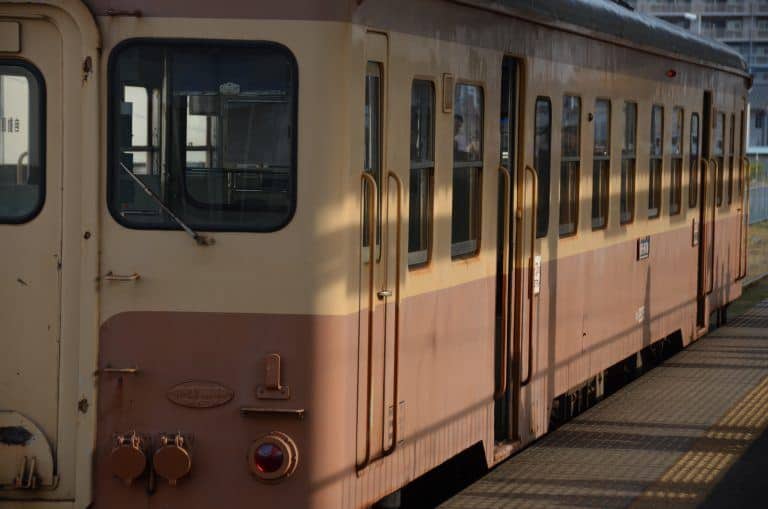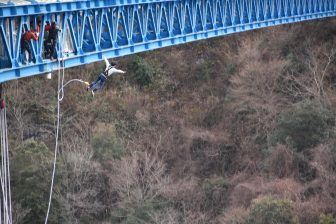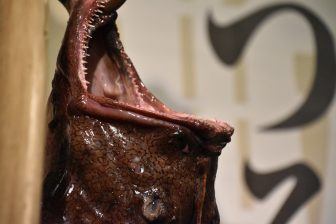Ibaraki
Population of Ibaraki: 2,902,401
Surface area covered: 6.097,12
Best time of year to visit: see Japan
Capital: Mito
Principal cities: Kashima, Itachi, Ryugasaki, Toride, Tsukuba, Tsuchiura.
The prefecture of Ibaraki in Japan is located towards the north-east of the metropolitan area of Tokyo and is bordered to the north by Fukushima, to the east by the Pacific Ocean, to the south by the prefectures of Chiba and Saitama and to the west by the prefecture of Tochigi.
This is an area of Japan that has been known historically for its agricultural production, in particular for the production of fermented soya (natto), melons and lotus roots.
From an industrial point of view, the area of Hitachi is of significant importance.
The city of Tsukuba is the location of an important university and of various different research centres.
The name Ibaraki belonged to one of the old counties within the ancient feudal system of Japan and seems to have been derived from the word for thorny or spiky.
In certain old documents there are also some ideograms for trees (ki) and ibara-ki (a thorny tree).
What to visit
It is worth seeing the Fukuroda waterfall close to Mito, which is one of the three largest waterfalls in Japan. It is particularly beautiful in winter when cascades of icicles often form, or in the autumn with the spectacular displays of autumn leaves.
The Great Buddha of Ushiku also merits a visit and is situated near Tsuchiura.
The statue is 120 metres high and is the tallest bronze statue in the world.
The town of Yuki has managed to preserve many buildings from the Edo period and makes it possible to see how an urban centre was structured at that time.
The Kairakuen Garden in Mito is one of the largest in Japan and is famous for its flowering plum trees between February and March.
Lake Kasumigaura and the other lakes nearby are a well-known tourist destination as well as being popular for fishing sports.
We would recommend a visit in July when you can admire the carpets of lotus flowers emerging from the waters of the ponds in this area of the lakes.
History
Ibaraki is situated in the territories that were once part of the ancient district of Hitachi such as Shimosa, Sashima, Toyoda, Okadaku, Soma, Katori and Katsushika.
The province has been inhabited since ancient times and interesting remnants of the Kofun period can be seen here.
During the Edo period, Mito was entrusted by Tokugawa Ieyasu to his son, Yorifusa and remained under the control of the Tokugawa until the Meiji Restoration in 1868.
The Tokugawa of Mito had promised to create The Great History of Japan (Dai Nihon-shi) and from 1657, this was a project around which numerous neo-Confucian scholars met, and was the beginning of what became known as the Mitogaku (the school / studies of Mito).
The Mito School was to have a great influence on the development of the nationalist and indigenous movements, providing an interpretation of history that had Shintoism and the figure of the Emperor at the very centre of the nation’s past.
Also from this ideological premise came the development of the “sonno joi” movement (giving respect to the Emperor and hunting foreigners), particularly so after the arrival of Commodore Perry in the Bay of Tokyo in 1853 and it would also have a strong influence on the activities involved in the “restoration” of imperial power.
This influence was not solely ideological but manifested itself in real acts of insurrection which opened up the field for even more decisive action against the Tokugawa government later on. (Ironically, Lord Mito was actually a member of the Tokugawa family).
Another district of great importance in the province of Ibaraki is that of Hitachi. Although the history of this area is very old, Palaeolithic remains having been found here, it was during the Meiji period, with the opening of the copper mines that the area became really important.
Subsequently, other industries started production in the area, beginning with the electricity industry and more recently, the electronics sector.
Because of this, the area suffered frequent bombing raids during the Second World War, which, due to some terrible errors, caused the deaths of numerous civilian victims.
Nowadays, the city of Hitachi, as a result of this amalgamation of smaller centres, has become an industrial agglomeration of great importance with the headquarters of Hitachi and other affiliated companies situated here.
bungee jumping
[ Dec.2017 ] When we went to Ibaraki prefecture in Japan with my family, we visited Ryujin Big Suspension Bridge in Tokiwa-ota, too. This bridge is only for pedestrians, its length is 375 metres and…
cutting the hanging monkfish
On the second night of our short family trip to Ibaraki prefecture in Japan, we stayed in the Oarai Hotel facing the Oarai Beach. According to the website of this hotel, they have 12 different…
cutting the hanging monkfish
On the second night of our short family trip to Ibaraki prefecture in Japan, we stayed in the Oarai Hotel facing the Oarai Beach. According to the website of this hotel, they have 12 different…



